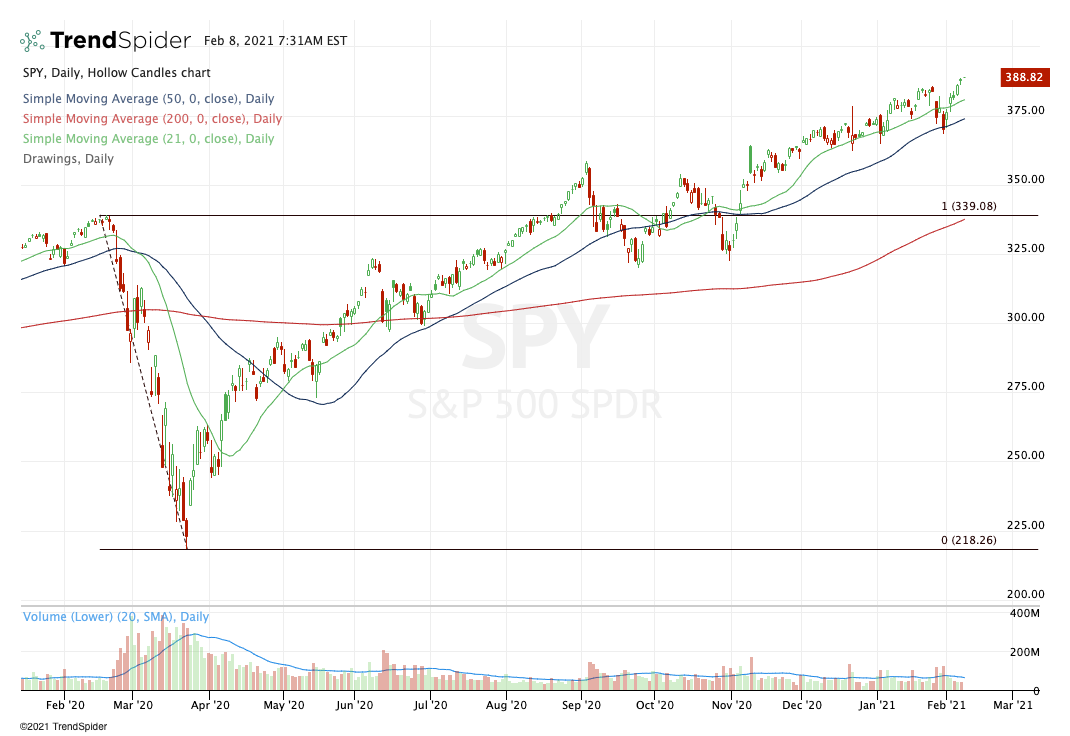In the last week of January, the SPDR S&P 500 Trust ETF (NYSEARCA:SPY) gave bulls a real startle. Investors saw the SPY quickly unwind, falling 4.5% in four days. Coming into that stretch, there were some warning signs and certainly some reasons why larger investors might have been unwinding their positions a bit.
Could we be due for a little consolidation now? Probably. But we are not here to discuss the daily or even the weekly action in the S&P 500.
Sometimes when we zoom in too far, we miss the bigger picture. I don’t want that to happen.
At the start of the year, I told investors I would be a buyer on the dips. That remains true after this latest little dip. With that being said, there will be volatility this year because there are still pockets of uncertainty.
K-Shape Recovery
Many are familiar with the term “V-shaped recovery,” but how about the “K-shaped?”
A K-shaped recovery occurs when different parts of the economy recover at different rates following a recession. That is unlike a V-shaped recovery where we see a rapid rebound or a uniform recovery where most or all industries see a steady rebound in economic activity.
Because of the novel coronavirus pandemic, we’re definitely staring down the barrel of a K-shaped recovery. For many companies, business has never been better. Revenues are exploding, earnings are strong and the stock prices are at or near the highs.
For other sectors though, the recovery has been anemic. Think about energy companies or travel and hospitality businesses. Certain parts of finance, real estate and retail are struggling. But even within these sectors, there’s a K-shaped recovery.
Take real estate for instance. Some parts of real estate are booming, as land and home values remain strong. For others — like real estate operators — they can’t get their tenants to pay rent on time, if they pay at all.
There is a wide discrepancy here and it shows.
In the most recent jobs report, we saw 49,000 jobs generated in January, missing estimates of 105,000. That was an improvement from December though, when we saw a job loss of 227,000. It’s clear that after the post-holiday activity, we’re seeing a declining interest in employment.
Sarah House, senior economist at Wells Fargo Securities, said it best: “The recovery is only stumbling along at this point … Yes, we managed to eke out a gain, but we’re still 9.9 million jobs shy of where we were back in February.”
It’s easy to look at the stock market and think everything is okay, but it’s not all roses beneath the surface.
What Does This Mean for the S&P 500?
 Source: Chart courtesy of TrendSpider
Source: Chart courtesy of TrendSpider
The stock market is not necessarily a reflection of the economy and that realization is pretty clear. One is at an all-time high, while the other is not. Not that the economy is in tatters, but it’s likely worse than it seems given rent moratoriums and increasing corporate debt.
But without getting into every last detail, we can clearly see the S&P 500 is at a new high. Obviously stocks are doing well enough to keep this bull alive. In other words, the market is thriving in spite of the economy and if the latter comes back to life, it may just juice it even higher.
Think about this: the five largest companies in the S&P 500 account for $8 trillion in market capitalization. That’s almost 30% of the index’s entire value.
Further, all of these companies just reported earnings. Most of them blew the doors off, with robust top- and bottom-line results. They can’t hold up the entire market — after all, 70% of the S&P 500 is composed of different companies — but they can go a long way toward stabilizing it.
Finally, we have a dovish Federal Reserve and rates are near all-time lows. As long as rates remain low (while fixed income remains uncompetitive) and the Fed keeps its easy-money policy in place, equities should be a winner. That’s even with pockets of euphoria around SPACs and volatility surrounding short-squeeze candidates.
Just Keep This In Mind
There is one thing I would suggest keeping in mind: Volatility.
I don’t expect a repeat of Q1 2020. It doesn’t seem like anything coronavirus-related could spook the markets like it did a year ago.
However, that doesn’t mean we are exempt from volatility. A slowdown in the recovery, political turmoil, issues with the vaccine or just plain old volatility could all have an impact.
Perhaps it’s just a 5% dip like we saw in January. Maybe we get a 10% to 15% haircut down the road. Whatever it may be, keep your cool and use the dips to accumulate the S&P 500 via the SPY ETF.
— Matt McCall and the InvestorPlace Research Staff
Apple to SHOCK Emerging $46T Industry [sponsor]Silicon Valley venture capitalist Luke Lango says this little-known Apple project could be 10X bigger than the iPhone, MacBook, and iPad COMBINED! Investing in Apple today would be a smart move... but he’s discovered a bigger opportunity lying under Wall Street’s radar -one that could give early investors a shot at 40X gains! Click here for more details.
Source: Investor Place


 Source: Chart courtesy of TrendSpider
Source: Chart courtesy of TrendSpider